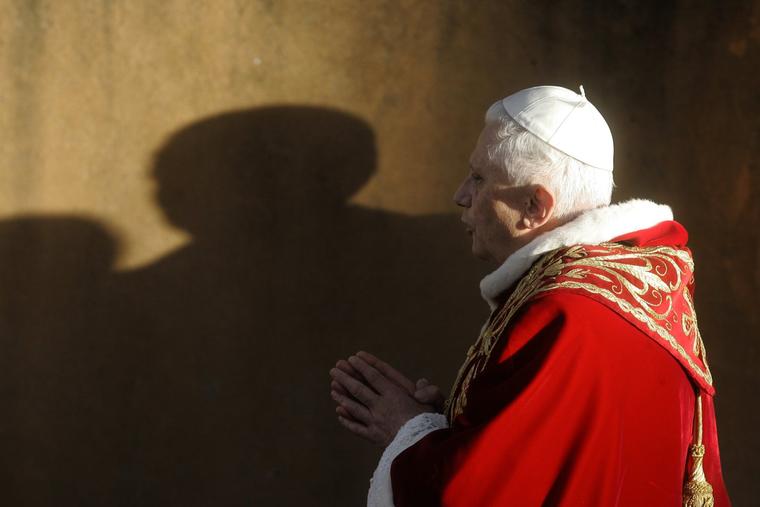- Feb 5, 2002
- 166,683
- 56,293
- Country
- United States
- Faith
- Catholic
- Marital Status
- Married
- Politics
- US-Others
COMMENTARY: Because the Church is the living Body of Christ, not a museum, its teaching develops and must develop. How do we determine whether that development is legitimate or not?
“Hermeneutics” is a fancy word that means one’s “principle for interpretation,” i.e., how you interpret what you’re looking at.
Most phenomena are not self-explanatory. They have to be interpreted. “Hermeneutics” is the key to interpretation. Now, the keychain in my pocket holds 10 keys, which open locks from 20 feet to 214 miles away from me. But only one will open my front door.
So, using the right key — the right “hermeneutic” — is not a “power grab.” It’s essential.
“Hermeneutic” isn’t one of those words typically bandied about. I suspect it’s even infrequent on standardized tests (except, maybe, in philosophy). The Merriam-Webster Dictionary, which includes sections on the history of words, lists the first usage of “hermeneutic” in 1737, but it seems Pope Benedict XVI put the word into broader circulation with his contrast of the “hermeneutic of continuity” versus the “hermeneutic of rupture” as competing ways of interpreting the Second Vatican Council.
In the wake of his death, I want to make something very clear: While Benedict may have breathed new life into a rare word and shone its light on a contemporary problem roiling the Church, he did not invent the concept. Although the phrase “hermeneutic of continuity” might come from Benedict, the idea behind the concept goes back much further, arguably to the Bible.
Because the Church is the living Body of Christ, not a museum, its teaching develops and must develop. The hermeneutical question is: How do we determine whether that development is legitimate or not?
Continued below.

 www.ncregister.com
www.ncregister.com
“Hermeneutics” is a fancy word that means one’s “principle for interpretation,” i.e., how you interpret what you’re looking at.
Most phenomena are not self-explanatory. They have to be interpreted. “Hermeneutics” is the key to interpretation. Now, the keychain in my pocket holds 10 keys, which open locks from 20 feet to 214 miles away from me. But only one will open my front door.
So, using the right key — the right “hermeneutic” — is not a “power grab.” It’s essential.
“Hermeneutic” isn’t one of those words typically bandied about. I suspect it’s even infrequent on standardized tests (except, maybe, in philosophy). The Merriam-Webster Dictionary, which includes sections on the history of words, lists the first usage of “hermeneutic” in 1737, but it seems Pope Benedict XVI put the word into broader circulation with his contrast of the “hermeneutic of continuity” versus the “hermeneutic of rupture” as competing ways of interpreting the Second Vatican Council.
In the wake of his death, I want to make something very clear: While Benedict may have breathed new life into a rare word and shone its light on a contemporary problem roiling the Church, he did not invent the concept. Although the phrase “hermeneutic of continuity” might come from Benedict, the idea behind the concept goes back much further, arguably to the Bible.
Because the Church is the living Body of Christ, not a museum, its teaching develops and must develop. The hermeneutical question is: How do we determine whether that development is legitimate or not?
Continued below.

In Defense of Pope Benedict XVI’s ‘Hermeneutic of Continuity’
COMMENTARY: Because the Church is the living Body of Christ, not a museum, its teaching develops and must develop. How do we determine whether that development is legitimate or not?
